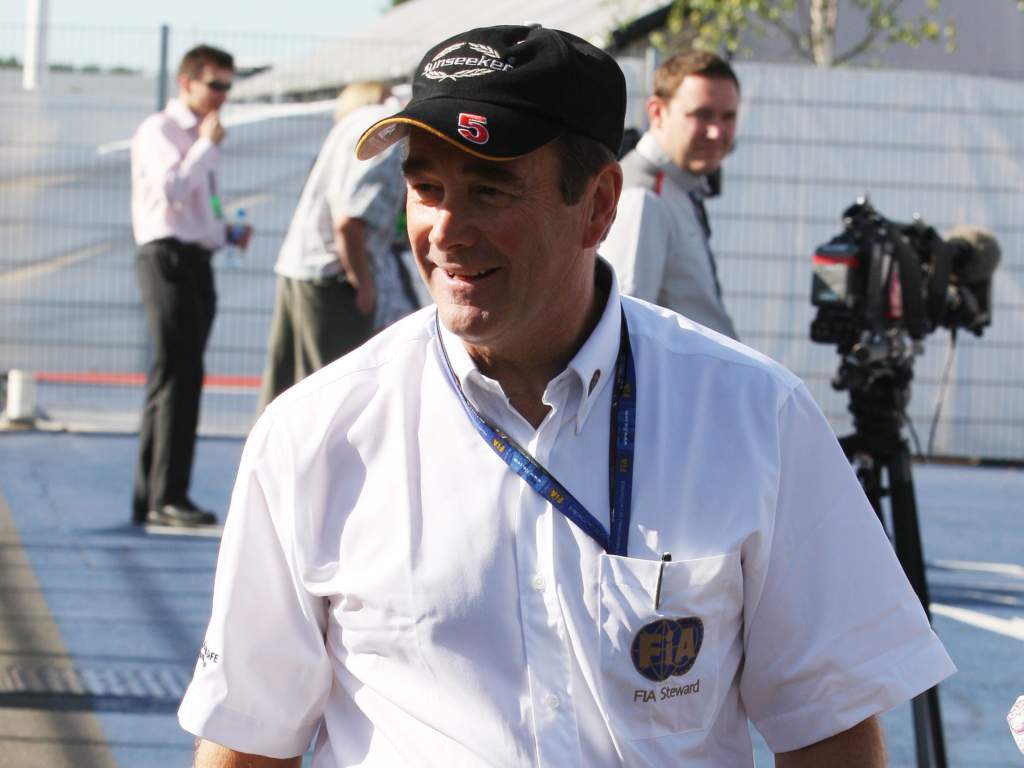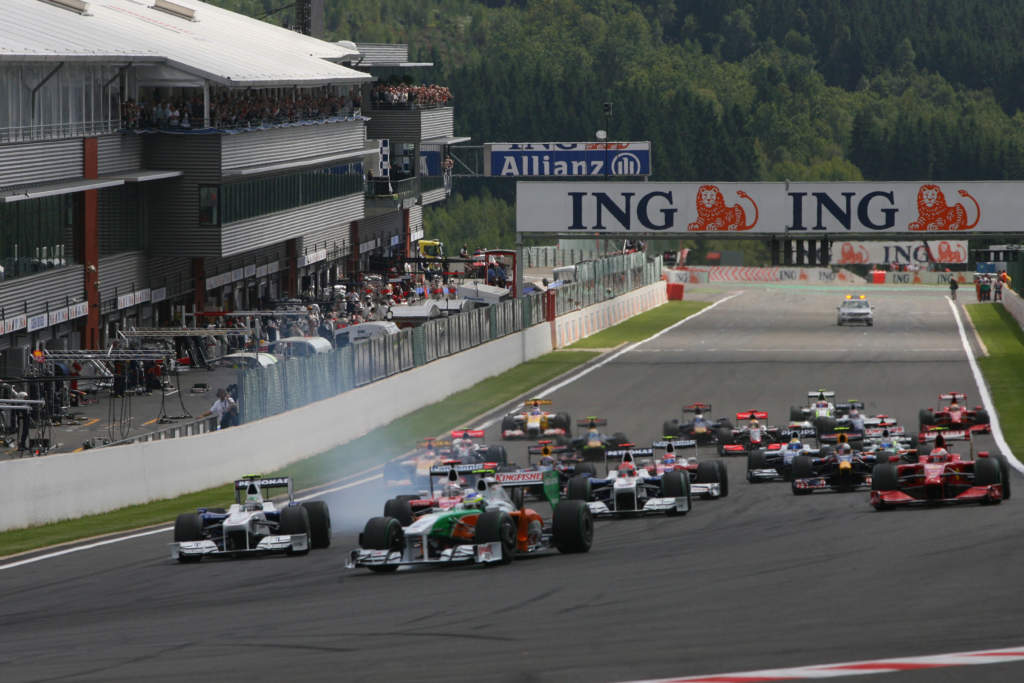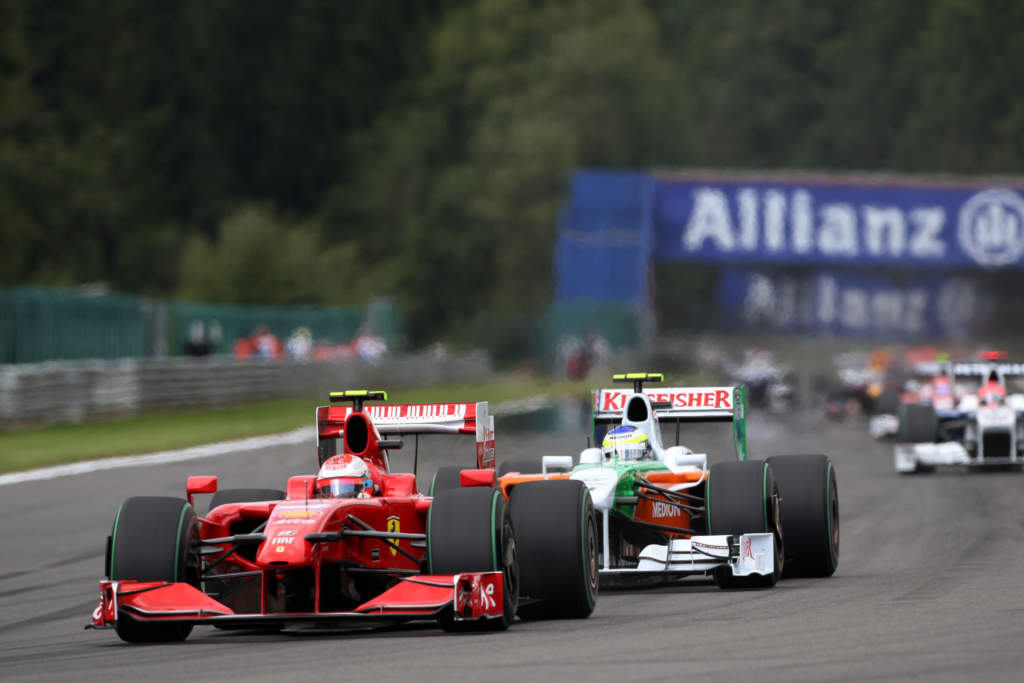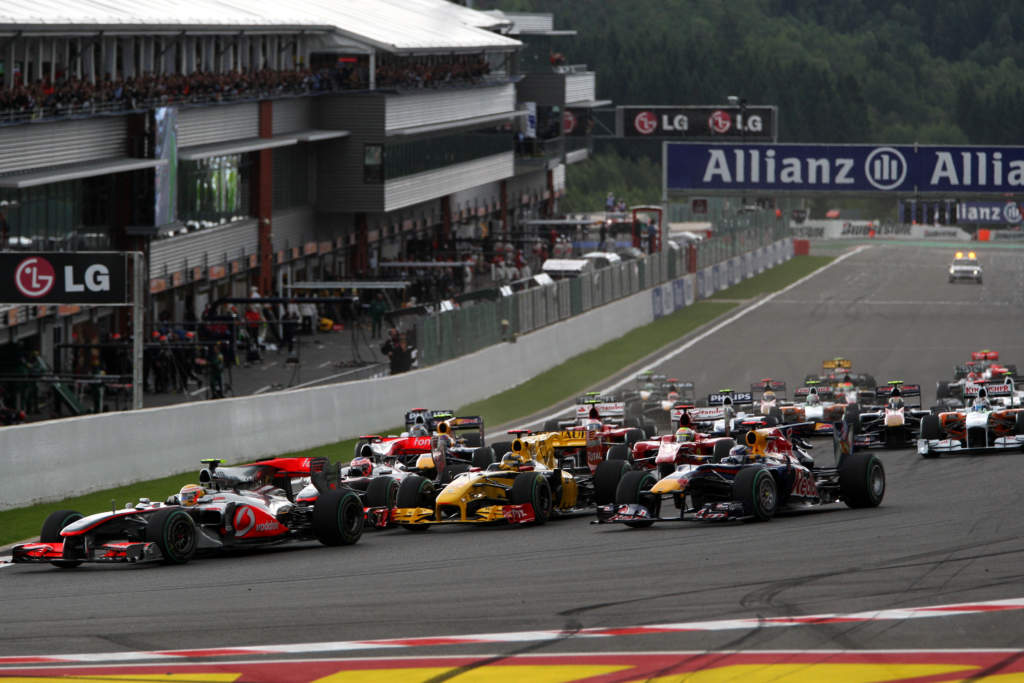Up Next

Fernando Alonso’s complaints about drivers using the run-off on the outside of Turn 1 at the Red Bull Ring fell on deaf ears during Formula 1’s recent double-header.
But fellow past world champion Nigel Mansell could help the Alpine driver’s case thanks to his actions over a decade ago.
Alonso was driving for Ferrari during the 2010 Belgian Grand Prix weekend, when 1992 world champion Mansell was acting as FIA driver steward. In that capacity, he was the driving force behind a move preventing drivers abusing the prodigious Spa run-off are at the first corner of the race.
This was the first season that a former driver was added as a fourth member of the FIA stewarding panel for each race and Mansell took a very active and vocal role in pushing for this. As Force India driver Vitantonio Liuzzi put it, “Nigel has been a pretty strong, fair voice”.

Mansell was particularly forceful in the drivers’ briefing on Friday that weekend as he and race director Charlie Whiting pushed for the leniency that had been given for such offences at Spa being eased.
Then, as now, the exit of the La Source hairpin was a kerb followed by a strip of artificial grass then a large asphalt run-off area. Drivers using the run-off could carry more speed through and out of the corner, potentially gaining an advantage.

In the 2009 Belgian GP, this had been crucial to Kimi Raikkonen’s victory. The Ferrari driver was impeded off the line by Rubens Barrichello’s Brawn going into anti-stall and was on the outside line approaching the right-hand hairpin.
He was fourth into the corner behind leader Giancarlo Fisichella, Toyota’s Jarno Trulli and BMW Sauber driver Nick Heidfeld – with Robert Kubica just behind and also likely to pass him. But Raikkonen, wisely realising that precedent said he could get away with this, took to the exit run-off, way off track, rather than holding the car tighter (and therefore far slower) on the outside line.
It was possible to have stayed on the track on the outside line, it simply would have been costly in terms of position – which is the risk that comes with taking the outside line.

Instead Raikkonen committed to taking to the exit run-off very early, ensuring his minimum speed was higher than it would have been even with an optimal run through the hairpin.
This allowed him to emerge from the first corner in third place, now behind the fast-starting Kubica, and carry the speed up through Eau Rouge then make a pass for second on the approach to Les Combes.
It ensured that, after the safety-car period, he was in the right place to overtake Fisichella for the lead on the Kemmel Straight at the restart with a dash of assistance from his KERS.

While what Raikkonen did was legitimate given the way the rules were applied and he should be applauded for taking advantage of what was permitted, Mansell was correct that it was not conducive to fair racing given the advantage that was gained.
That led to the crackdown and, despite complaints that it would not be practical and that drivers might put themselves in positions to gain advantage by being forced off – given this was the one circumstance in which the run-off could be used – the 2010 start was clean.
Only Virgin driver Timo Glock used the La Source run-off on the opening lap of the 2010 race and nobody was penalised, although Jaime Alguersuari would later lose 10th place due to a 20-second penalty after for cutting the chicane while battling with Liuzzi.

But Mansell’s determination to force this through, which did earn him some criticism for overstepping his role as driver steward, was correct. And it proves that, with suitable resolve, it is possible to get what Alonso was complaining about under control.
That doesn’t mean the run-off can’t be used legitimately – but that drivers can’t use it unfairly to gain an advantage or use it as an escape route that’s weighed into their risk-reward calculations if they put their cars in high-risk situations.
As Raikkonen showed in 2009 and Daniel Ricciardo last weekend, drivers know these permitted tricks and let them inform their strategy.
If you approach the first corner knowing the run-off is there to be used with impunity, you can be more aggressive on the outside without a high level of risk. They are absolutely right to do so and it would be wrong if they didn’t – but the real question is whether it should be allowed.
So while Mansell himself isn’t in a position to help Alonso’s campaign – and the Alpine driver is likely to bring it up in the drivers’ briefing again in the future having raised it in Austria – the precedent he created at Spa in 2010 is a useful case study if the FIA does want to tackle first-corner-of-the-race track limits abuses.



